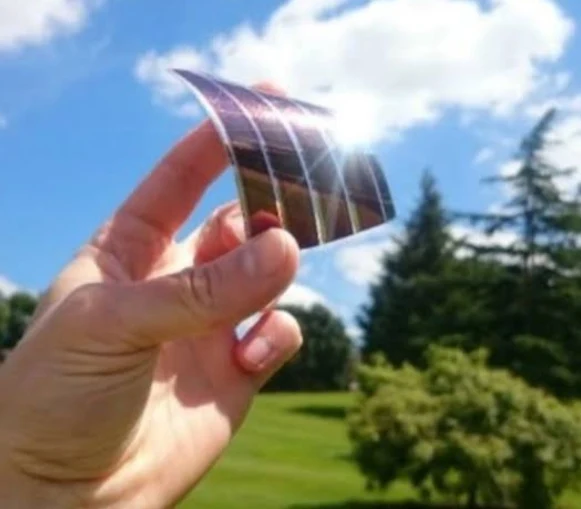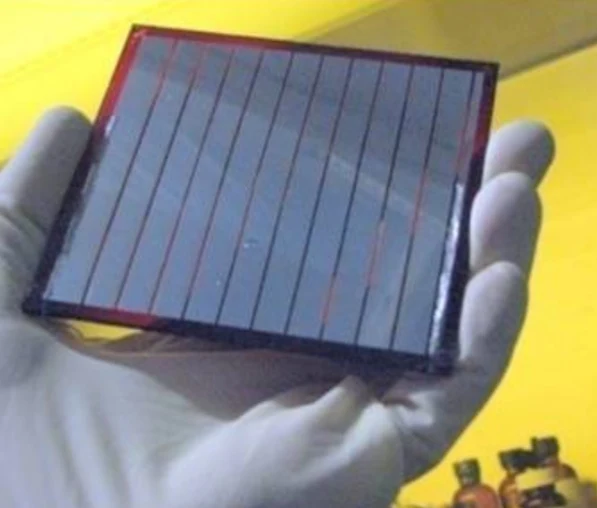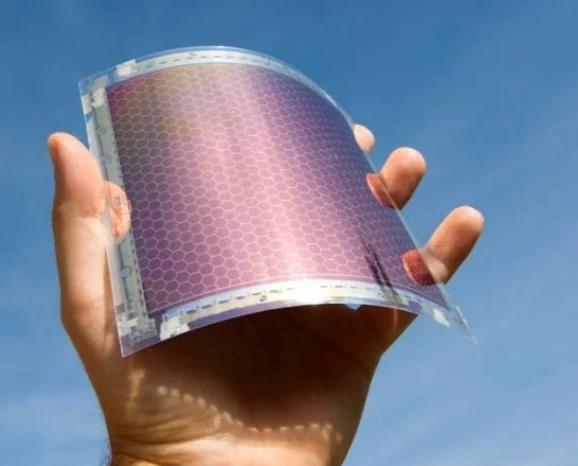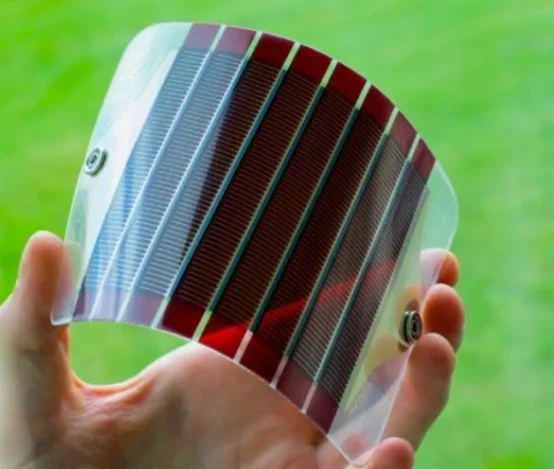Organic Photovoltaics: Powering the Future with Carbon-Based Solar Cells
The sun shines down, its energy bathing the Earth in light. For centuries, humans have dreamt of harnessing this power, and with traditional silicon solar panels, we've made significant strides.
But what if there was another way, a method more flexible, lightweight, and potentially cheaper? Enter the realm of organic photovoltaics (OPVs), solar cells that utilize the very building blocks of life – carbon-based molecules – to capture the sun's energy and convert it into electricity.
Organic Advantage:
OPVs hold several aces up their sleeve compared to their silicon counterparts:
- Flexibility: Forget rigid panels. OPVs can be printed onto thin, lightweight films, making them ideal for curved surfaces, building integration, and even portable applications like foldable chargers.
- Cost-Effectiveness: Production involves solution-processing at low temperatures, potentially leading to significant cost reductions, especially for large-scale deployment.
- Sustainability: Derived from renewable resources like plants, OPVs align with our desire for eco-friendly technologies.
But the Story Isn't All Sunshine:
Challenges remain for OPVs to fully take over the solar scene:
- Efficiency: While rapidly improving, their current conversion efficiencies lag behind silicon, meaning they capture less of the sun's energy.
- Stability: Exposure to sunlight and moisture can degrade OPVs over time, requiring advancements in material science for long-term durability.
A Brighter Future Beckons:
Despite these hurdles, the potential of OPVs is undeniable. Research and development are actively addressing the efficiency and stability concerns. Already, niche applications like powering sensors and wearables showcase their promise.
Imagine a world where:
- Buildings generate their own electricity, seamlessly integrated into their design.
- Portable electronics recharge under the sun, eliminating the need for bulky cords.
- Sustainable, low-cost solar solutions empower remote communities.
This is the future that OPVs could help create. With continued innovation, these organic marvels could revolutionize the way we capture the sun's energy, paving the path for a more sustainable and brighter tomorrow.
Type of Organic photovoltaics (OPVs)
Organic photovoltaics (OPVs) can be categorized into different types based on several factors, each with its own strengths and weaknesses:
By Architecture:
- Single-layer: Simplest design, but low efficiency. Offers advantages in low-cost production and transparency.
- Bulk heterojunction (BHJ): Most common type, uses a blend of donor and acceptor materials for efficient exciton separation and charge collection. Offers flexibility in material selection and tunability.
- Tandem: Stacks multiple OPV layers with different bandgaps to capture a wider range of sunlight, potentially achieving higher efficiencies. More complex and expensive to produce.
By Material Type:
- Polymer-based: Offers good mechanical flexibility and printability, but can suffer from lower stability and charge mobility.
- Small molecule-based: Often show higher efficiencies and stability than polymers, but can be more expensive and less printable.
- Hybrid: Combines polymers and small molecules to benefit from their individual strengths. Still under development, with potential for improved performance.
By Application:
- Building-integrated photovoltaics (BIPV): Thin-film OPVs can be integrated into building materials for on-site electricity generation.
- Portable and flexible devices: Lightweight and flexible OPVs can power wearable electronics, sensors, and portable chargers.
- Semitransparent applications: Transparent OPVs can be used in windows and greenhouses to generate electricity without blocking light.
Emerging Types:
- Perovskite solar cells: These hybrid organic-inorganic materials offer high efficiencies and tunability, but stability challenges remain.
- Non-fullerene acceptors (NFAs): New acceptor materials with improved properties are leading to more efficient and stable OPVs.
It's important to note that these categories are not mutually exclusive, and some OPVs may combine elements from different types. The choice of OPV type depends on the specific application and desired properties.
Organic photovoltaic Technology
Organic Photovoltaic Technology: A Deep Dive
Organic photovoltaics (OPVs) represent a fascinating technology with the potential to transform the solar energy landscape. By harnessing the power of carbon-based molecules, they offer distinct advantages over traditional silicon solar cells, making them suitable for various applications. Let's delve into the core technology and its exciting potential.
Working principle:
At its heart, an OPV cell functions similarly to its silicon counterpart. Sunlight excites electrons within organic materials, creating excitons (bound electron-hole pairs). The key lies in efficiently separating these excitons and collecting the liberated charges to generate electricity. This is achieved through carefully designed layers within the cell:
- Donor layer: Absorbs sunlight and generates excitons.
- Acceptor layer: Attracts electrons from the donor, creating a charge separation.
- Electrodes: Collect the separated electrons and holes, completing the circuit and generating electricity.
Key technological aspects:
- Material selection: Choosing the right donor and acceptor materials is crucial for efficient exciton separation, charge transport, and overall device performance. Researchers are constantly exploring new materials and combinations to improve efficiency and stability.
- Device architecture: Different architectures, like bulk heterojunction and tandem cells, offer distinct advantages and challenges. Optimizing the architecture for specific applications is key.
- Fabrication techniques: Solution-processing techniques like roll-to-roll printing offer potential for low-cost, large-scale manufacturing, a significant advantage of OPVs.
Advantages of OPVs:
- Flexibility: Their thin-film nature makes them highly flexible, enabling integration into diverse applications like building materials, clothing, and wearable devices.
- Lightweight: OPVs are significantly lighter than silicon panels, making them ideal for portable applications and integration into lightweight structures.
- Low-cost potential: Solution-processing offers opportunities for low-cost manufacturing, especially for large-scale deployment.
- Sustainability: Many OPV materials can be derived from renewable resources, aligning with eco-friendly energy solutions.
Organic photovoltaic: Ongoing Projects
The field of organic photovoltaics (OPVs) is buzzing with activity, with numerous ongoing projects aimed at overcoming challenges and unlocking its full potential. Here are some exciting examples:
Boosting Efficiency:
- University of Florida: Exploring new small molecule donors and acceptors to push efficiency beyond 20%.
- Princeton University: Utilizing machine learning to design novel materials with optimal properties for efficient charge generation and transport.
- Energy Research Centre of the Netherlands (ECN): Developing tandem OPV architectures with complementary light absorption layers to achieve efficiencies exceeding 30%.
Enhancing Stability:
- KAUST (King Abdullah University of Science and Technology): Fabricating OPVs with self-healing properties to resist degradation from environmental factors.
- Imperial College London: Designing OPVs with improved interfacial layers to minimize charge recombination and enhance long-term stability.
- National Renewable Energy Laboratory (NREL): Investigating encapsulation methods to protect OPVs from moisture and ultraviolet radiation.
Expanding Applications:
- Fraunhofer Institute for Solar Energy Systems (ISE): Integrating OPVs into building facades for on-site electricity generation.
- Heliatek: Developing flexible OPV modules for powering wearables and portable electronics.
- Konarka Technologies: Creating transparent OPVs for smart windows that generate electricity without sacrificing light transmission.
Emerging Technologies:
- Perovskite Solar Cells: Several projects are exploring perovskite-based OPVs, aiming for high efficiencies and potential for low-cost fabrication.
- Non-fullerene Acceptors (NFAs): Research is ongoing to develop new NFAs with improved properties for more efficient and stable OPVs.
- Organic Tandem Cells: Projects are investigating stacking different OPV materials to capture a wider range of the solar spectrum and achieve higher efficiencies.
Conclusion for Organic photovoltaic Type and Technology
Conclusion: A Bright Future for Organic Photovoltaics
Organic photovoltaics (OPVs) stand at a crossroads, brimming with potential but facing crucial challenges. Their unique properties like flexibility, lightweight nature, and potential for low-cost manufacturing offer exciting possibilities for diverse applications beyond traditional silicon solar cells.
Key strengths:
- Adaptability: Thin-film and lightweight nature enable integration into building materials, wearables, and portable devices.
- Sustainability: Many materials can be derived from renewable resources, aligning with eco-friendly energy solutions.
- Scalability: Solution-processing techniques offer opportunities for low-cost, large-scale manufacturing.
Challenges to address:
- Efficiency: While improving rapidly, efficiency needs to increase to become fully competitive with silicon counterparts.
- Stability: Long-term durability under environmental factors like sunlight and moisture requires further material science advancements.
- Scalability: Achieving high-quality, uniform OPVs over large areas for commercial production needs further development in fabrication processes.
Looking ahead:
Despite these challenges, ongoing research and development projects are actively addressing them. New materials, improved device architectures, and innovative fabrication techniques are paving the way for more efficient, stable, and scalable OPVs.
Emerging areas like:
- Perovskite solar cells: Combining organic and inorganic materials for high efficiency and tunability.
- Non-fullerene acceptors: New materials leading to more efficient and stable OPVs.
- Tandem architectures: Stacking OPV layers for broader light absorption and potentially higher efficiencies.
Promise for the future:
OPVs hold immense potential to revolutionize the solar energy landscape by offering:
- Distributed energy generation: Powering diverse applications directly where energy is needed.
- Integration into everyday objects: Buildings, clothing, and even transportation could generate their own electricity.
- Sustainable energy solutions: Aligning with the need for clean and renewable energy sources.
As research and development continue to break down barriers, OPVs are poised to play a significant role in shaping a more sustainable and distributed energy future. While challenges remain, the potential is undeniable, and the future of organic photovoltaics shines bright.






